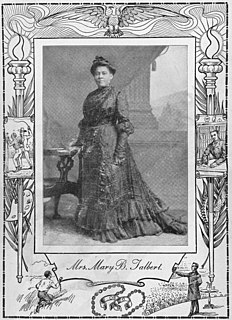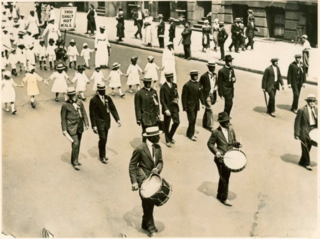Related Research Articles

Paul Leroy Robeson was an American bass-baritone concert artist, stage and film actor, professional football player, and activist who became famous both for his cultural accomplishments and for his political stances.

William Edward Burghardt Du Bois was an American sociologist, socialist, historian and Pan-Africanist civil rights activist. Born in Great Barrington, Massachusetts, Du Bois grew up in a relatively tolerant and integrated community, and after completing graduate work at the University of Berlin and Harvard, where he was the first African American to earn a doctorate, he became a professor of history, sociology and economics at Atlanta University. Du Bois was one of the founders of the National Association for the Advancement of Colored People (NAACP) in 1909.

William Monroe Trotter, sometimes just Monroe Trotter, was a newspaper editor and real estate businessman based in Boston, Massachusetts. An activist for African-American civil rights, he was an early opponent of the accommodationist race policies of Booker T. Washington, and in 1901 founded the Boston Guardian, an independent African-American newspaper he used to express that opposition. Active in protest movements for civil rights throughout the 1900s and 1910s, he also revealed some of the differences within the African-American community. He contributed to the formation of the National Association for the Advancement of Colored People (NAACP).

Walter Francis White was a civil rights activist who led the National Association for the Advancement of Colored People (NAACP) for a quarter of a century, 1929–1955, after joining the organization as an investigator in 1918. He directed a broad program of legal challenges to racial segregation and disfranchisement. He was also a journalist, novelist, and essayist. He graduated in 1916 from Atlanta University.

Roy Ottoway Wilkins was a prominent activist in the Civil Rights Movement in the United States from the 1930s to the 1970s. Wilkins' most notable role was his leadership of the National Association for the Advancement of Colored People (NAACP), in which he held the title of Executive Secretary from 1955 to 1963 and Executive Director from 1964 to 1977. Wilkins was a central figure in many notable marches of the civil rights movement. He made valuable contributions in the world of African-American literature, and his voice was used to further the efforts in the fight for equality. Wilkins' pursuit of social justice also touched the lives of veterans and active service members, through his awards and recognition of exemplary military personnel.
The Communist Party USA, ideologically committed to foster a socialist revolution in the United States, played a significant role in defending the civil rights of African Americans during its most influential years of the 1930s and 1940s. In that period, the African-American population was still concentrated in the South, where it was largely disenfranchised, excluded from the political system, and oppressed under Jim Crow laws.

Lynching in the United States was the widespread occurrence of extrajudicial killings which began in the pre–Civil War South in the 1830s and ended during the civil rights movement in the 1950s and 1960s. Although the victims of lynchings were members of various ethnicities, after roughly 4 million enslaved African Americans were emancipated, they became the primary targets of white Southerners. Lynchings in the U.S. reached their height from the 1890s to the 1920s, and they primarily victimised ethnic minorities. Most of the lynchings occurred in the American South because the majority of African Americans lived there, but racially motivated lynchings also occurred in the Midwest and border states.
The Civil Rights Congress (CRC) was a United States civil rights organization, formed in 1946 at a national conference for radicals and disbanded in 1956. It succeeded the International Labor Defense, the National Federation for Constitutional Liberties, and the National Negro Congress, serving as a defense organization. Beginning about 1948, it became involved in representing African Americans sentenced to death and other highly prominent cases, in part to highlight racial injustice in the United States. After Rosa Lee Ingram and her two teenage sons were sentenced in Georgia, the CRC conducted a national appeals campaign on their behalf, their first for African Americans.

We Charge Genocide is a paper accusing the United States government of genocide based on the UN Genocide Convention. This paper was written by the Civil Rights Congress (CRC) and presented to the United Nations at meetings in Paris in December 1951.
Bartley Crum was an American lawyer who became prominent as a member of the Anglo-American Committee of Inquiry, his book on that experience, and for defending targets of HUAC, particularly the Hollywood Ten and Paul Robeson.
The United States Progressive Party of 1948 was a left-wing political party in the United States that served as a vehicle for the campaign of Henry A. Wallace, a former vice president, to become President of the United States in 1948. The party sought racial desegregation, the establishment of a national health insurance system, an expansion of the welfare system, and the nationalization of the energy industry. The party also sought conciliation with the Soviet Union during the early stages of the Cold War.

Mary Burnett Talbert was an American orator, activist, suffragist and reformer. In 2005, Talbert was inducted into the National Women's Hall of Fame.

Jesse Washington was a seventeen-year-old African American farmhand who was lynched in the county seat of Waco, Texas, on May 15, 1916, in what became a well-known example of racist lynching. Washington was convicted of raping and murdering Lucy Fryer, the wife of his white employer in rural Robinson, Texas. He was chained by his neck and dragged out of the county court by observers. He was then paraded through the street, all while being stabbed and beaten, before being held down and castrated. He was then lynched in front of Waco's city hall.
The Council on African Affairs (CAA), until 1941 called the International Committee on African Affairs (ICAA), was a volunteer organization founded in 1937 in the United States. It emerged as the leading voice of anti-colonialism and Pan-Africanism in the United States and internationally before Cold War anti-communism and liberalism created too much strife among members; the organization split in 1955. The split was also precipitated by co-founder Max Yergan's abandonment of left-wing politics; he advocated colonial rule in Africa.

The National Association for the Advancement of Colored People (NAACP) is a civil rights organization in the United States, formed in 1909 as an interracial endeavor to advance justice for African Americans by a group including W. E. B. Du Bois, Mary White Ovington, Moorfield Storey and Ida B. Wells. Leaders of the organization included Thurgood Marshall and Roy Wilkins.
The Peace Information Center (PIC) was an anti-war organization based in the United States which provided information on peace initiatives in other countries, and promoted the Stockholm appeal. The organization was in existence from April 3 to October 12, 1950. Members included O. John Rogge, W. E. B. Du Bois, John T. McManus, Paul Robeson, C. B. Baldwin, Albert E. Kahn, Johannes Steel, Gene Weltfish, Leon Strauss, Elizabeth Moos, Kyrle Elkin, Abbot Simon and Shirley Graham.

The anti-lynching movement was an organized political movement in the United States that aimed to eradicate the practice of lynching. Lynching was used as a tool to repress African Americans. The anti-lynching movement reached its height between the 1890s and 1930s. The first recorded lynching in the United States was in 1835 in St. Louis, when an accused killer of a deputy sheriff was captured while being taken to jail. The black man named Macintosh was chained to a tree and burned to death. The movement was composed mainly of African Americans who tried to persuade politicians to put an end to the practice, but after the failure of this strategy, they pushed for anti-lynching legislation. African-American women helped in the formation of the movement, and a large part of the movement was composed of women's organizations.
Ella Barksdale Brown was an American anti-lynching advocate, activist, educator, suffragette and journalist. She was a member of the first graduating class of Spelman College in Atlanta, Georgia.

The Independent Citizens Committee of the Arts, Sciences and Professions (ICCASP) (1945–1946) was an American association that lobbied unofficially for New Deal causes, as well as the cause of world peace; members included future US President Ronald Reagan. Some members would later be accused of infiltrating the group to spread socialist, and occasionally pro-Soviet Communist ideas. The group included a chapter sometimes called the "Hollywood Independent Citizens Committee of the Arts, Sciences and Professions" (HICCASP) involved in the Hollywood Ten.

Louis Everett Burnham was an African-American activist and journalist. From his college days, and continuing through adulthood, he was involved in activities emphasizing racial equality, through various left-wing organizations, campaigns and publications in both the northern and southern United States, particularly in New York City and Birmingham, Alabama.
References
- ↑ "Paul Robeson's Valedictory Address". Archived from the original on 2012-03-14. Retrieved 2013-12-19.
- ↑ Lewis, David L. (2000). W. E. B. Du Bois, 1919-1963: The Fight for Equality and the American Century. Henry Holt and Company. pp. 522–523. ISBN 9780805068139.
- ↑ Swindall, Lindsey R. (2013-02-07). Paul Robeson: A Life of Activism and Art . Rowman and Littlefield Publishers, Inc. pp. 113–114. ISBN 9781442207950.
American Crusade Against Lynching Paul Robeson.
- ↑ Du Bois, William Edward Burghardt (November 1922). "Opinion: The Anti-Lynching Crusaders". The Crisis : 8.
- ↑ "Pittsburgh Post-Gazette - Google News Archive Search". news.google.com. Retrieved 2017-03-07.
- ↑ Robeson, Paul (1978-01-01). Paul Robeson Speaks: Writings, Speeches, and Interviews, a Centennial Celebration. Citadel Press. ISBN 9780806508153.
- ↑ Jerome, Fred. The Einstein File (St, Martin's Press, 2000)
- ↑ "American Crusade Against Lynching To See President". The Chicago Defender (National Edition) (1921-1967). September 28, 1946. ProQuest 492741205.
- ↑ Finkelman, Paul (2009-02-02). Encyclopedia of African American History, 1896 to the Present: From the Age of Segregation to the Twenty-first Century Five-volume Set. Oxford University Press, USA. ISBN 9780195167795.